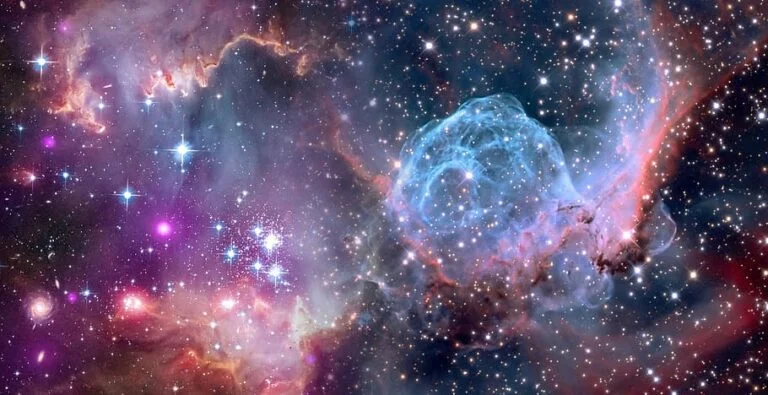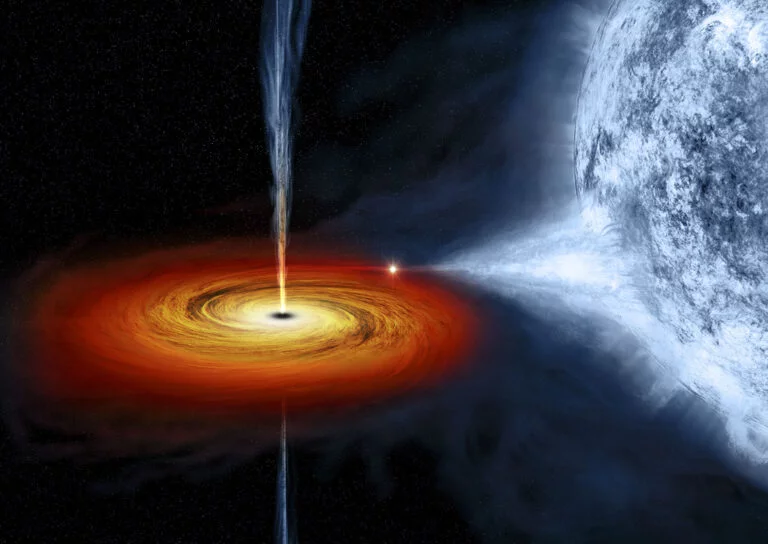Incredible Geminid meteor shower 2020 seen through the aurora
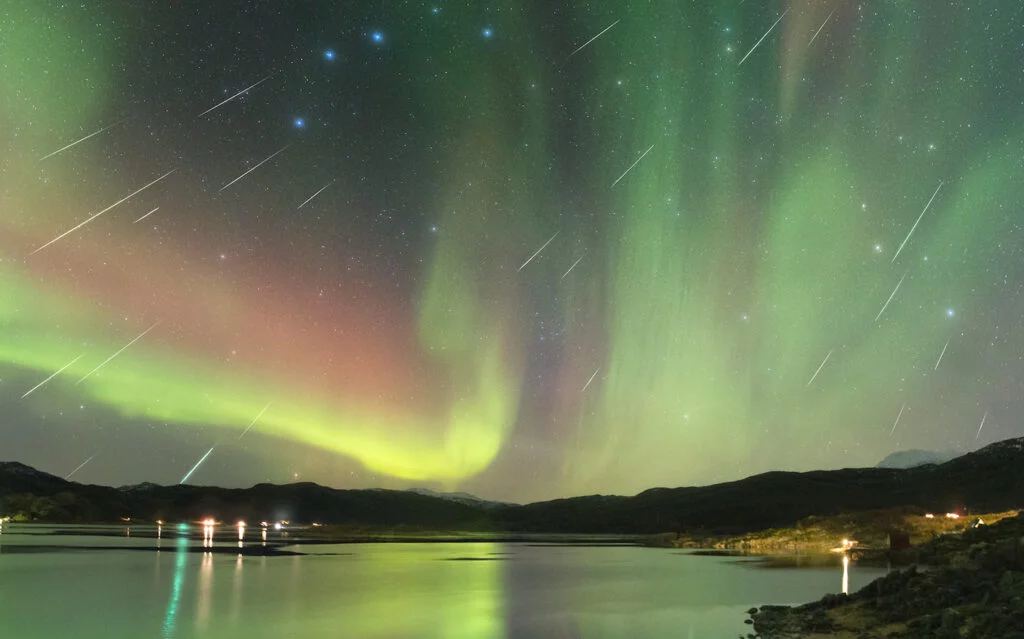
Credits: Adrien Mauduit
The Geminid meteor shower is usually one of the most beautiful to look at as it produces many bright shooting stars streaking across the sky. After the Perseids, it is probably the most famous and awaited one. This year, on December 13th, Norway bagged a meteor shower peak for the age. Not only was it the most productive meteor shower we have seen in years, but it was also witnessed through a surprise auroral show!
The Geminid meteor shower happens every year in mid-December, as Earth enters the debris clouds from comet 3200 Phaeton. We start seeing more and more meteors from December 10th till December 16th, but the peak of the shower happens on the night of the 13th to the 14th, at 2 am. Why 2:00 in the morning? Because that is when the radiant point Gemini- the point which all meteors seem to originate from, is at its highest in the night sky. You’re generally more likely to catch meteors then.
The radiant is just north of Castor, in the constellation Gemini. Gemini is very recognizable as it is made of two bright stars, Castor (hot blue) and Pollux (white). In December, Gemini rises in the eastern sky around 6pm for northern latitudes and later at night for mid-latitudes. The shower is best viewed from the northern hemisphere, but it can also be enjoyed from the southern hemisphere. If you are down under, Gemini rises around 9-10pm in the east-north-east and crosses its northernmost point in the sky around 2:40 am.

Gemini radiant. Credits: Sky and Telescope
The Geminids meteor shower is typically a very productive one, coming right after the Perseids. On a regular year, it yields about 60 meteors an hour on average, near the peak. This year, however, scientists predicted that roughly 100 shooting stars an hour could be visible.
2020 might seem to have been one of the worst year in known history for many things, but not for astronomical events, and a fortiori not for the Geminids. This year, it coincided with the new moon falling on the 14th of December. This means that even the faintest meteors would be detectable with the naked eye under a very dark sky, as the any type of light pollution washes out meteors.
As a sum-up, the Geminids 2020 were anticipated to deliver a great show, clear sky depending. Unfortunately, as we are getting colder temperatures in the northern hemisphere, more condensation and thus clouds, form. As a result, many places in the world, including most of northern Europe, lay under a thick blanket of overcast, which prevented many people from enjoying the show. Not if you were in northern Norway, though!
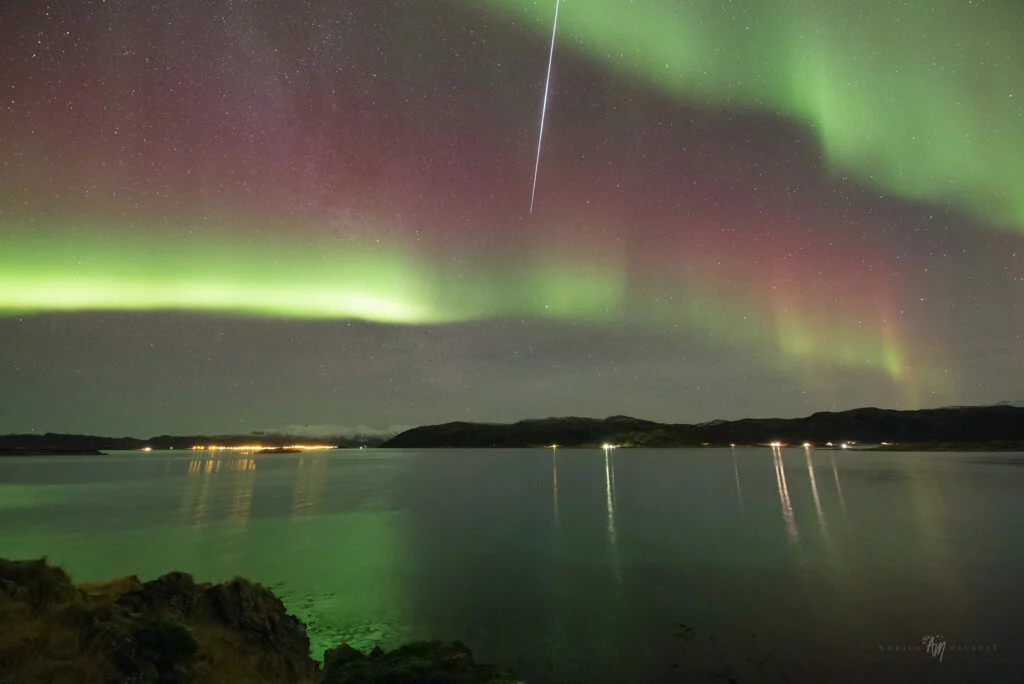
Credits: Adrien Mauduit
The weather in northern Norway is always quite unpredictable to the last minute, as it is so close to the cold Norwegian sea. At this time of year, it receives the tail-end of many extra-tropical cyclones or ‘Fall storms’, as they are called locally. They cause tenaciously lukewarm, humid and windy conditions for several days over the fjords. Fortunately, they haven’t happened that much in 2020 in comparison to 2019.
As more stable weather patterns were settling in on December 13th over the whole Troms area, many amateurs, including Night Lights Films’ photographer Adrien Mauduit, were able to enjoy clear skies for the meteor shower. Mauduit prepared all his cameras and drove to Skarsfjord, a dark place in the fjords near Tromsø.

Credits: Adrien Mauduit
He tells us: ‘ Last night, we were treated to one of the most spectacular astronomical shows of the year. It truly was a once-in-a-lifetime experience. Not only was the Geminids the most prolific meteor shower so far in 2020, but with the moon completely out of sight, we were able to count between 150 and 200 meteors from 1:00 am to 2:00 am local time! At some point, we just had to lie down with our eyes pointed upwards, as the meteors were just too quick and numerous at once. The record was even 15 meteors under 3 minutes!’
Mauduit made sure to find a spot where the mountains would not be overwhelming to be able to catch the meteors at a 360-degree angle. As he set up his cameras and trackers to catch the most meteors possible, a surprise auroral display made a grand entrance at the same time.
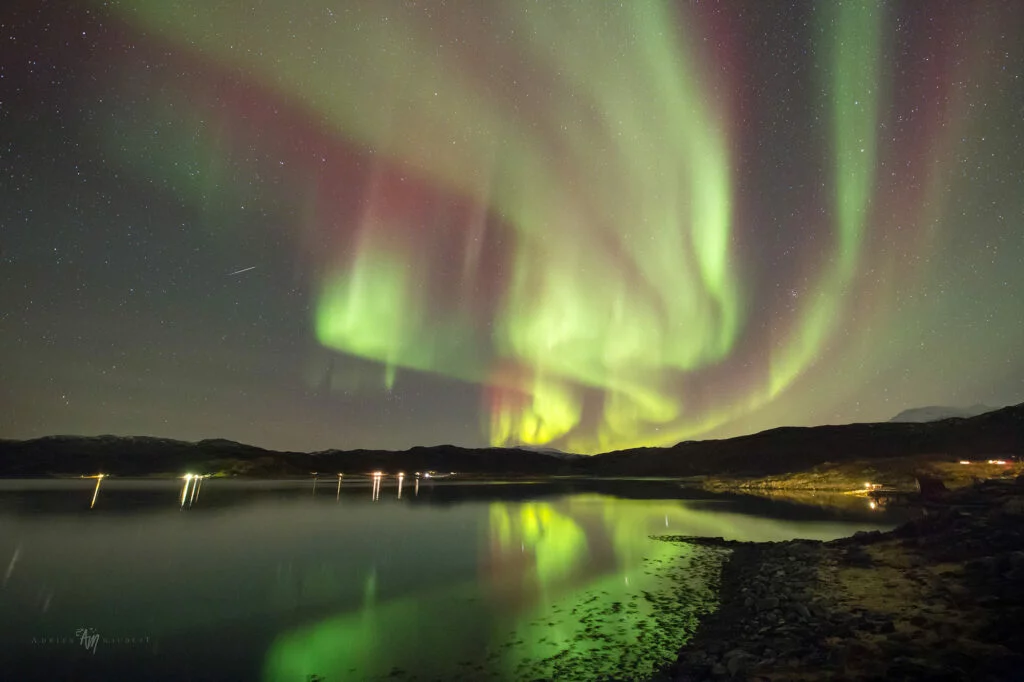
Credits: Adrien Mauduit
‘We did not expect to see much aurora at all that night as the geomagnetic activity was forecast to be low. It came as quite the surprise for me when Lady Green decided to take over the entire sky in two consecutive bright dancing shows. Both the aurora and meteors reflected off the calm waters of the fjord. It is safe to say that I will never forget such an incredible experience. To be able to witness such an incredible astronomical show in these conditions surely make it once-in-a-lifetime for me.’
Mauduit explained to us that despite all the magic that was in the air that night, the aurora made it quite difficult to capture consistency in the meteors for the still pictures he had in mind.
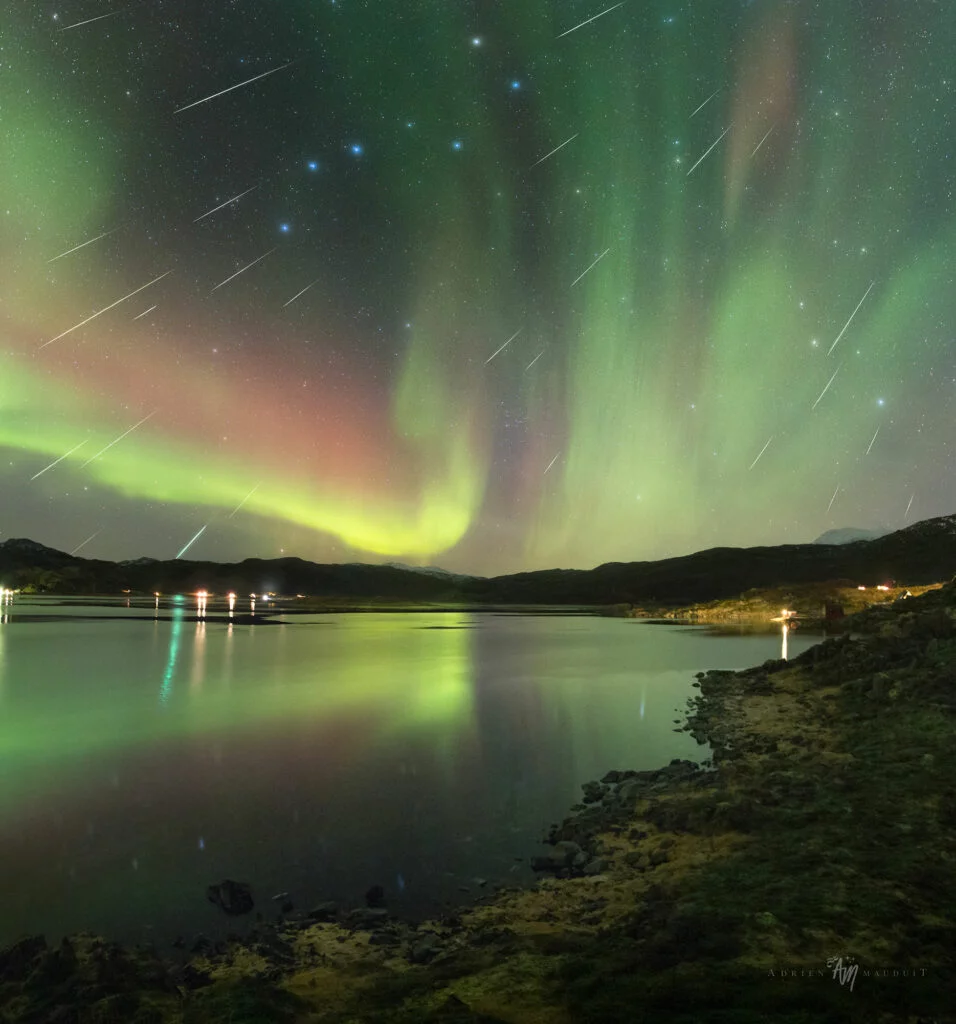
Credits: Adrien Mauduit
He continues: ‘As the Geminids punched through the bright aurora, they appeared very bright on the sequence of pictures. As the aurora varied in intensity through the course of the sequence, it was quite challenging to try and assemble them all in one final composite panorama. I had to re-adjust the brightness and color balance for all the shooting stars!’
This time, Mauduit focused his energy on recording the experience in real-time, as the aurora actually got too overwhelming for still pictures. He delivered such an incredible movie, where you can see actual meteors streaking through the northern lights to end up mirrored in the water. You can watch the full and Incredible Geminid meteor shower show in Adrien’s youtube video: https://www.youtube.com/watch?v=aGtK8GJfH5Q
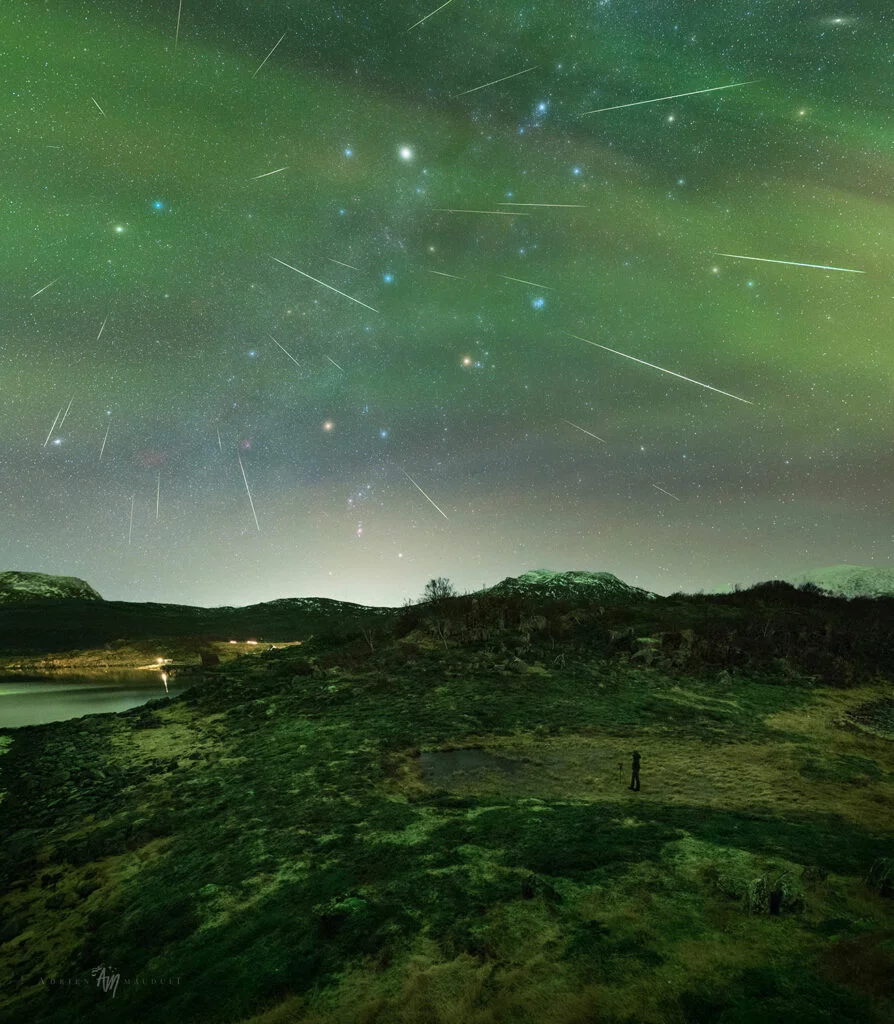
Credits: Adrien Mauduit
We loved hearing about the Incredible Geminid meteor shower from Adrien!

